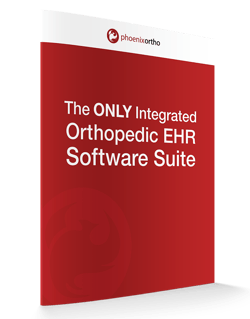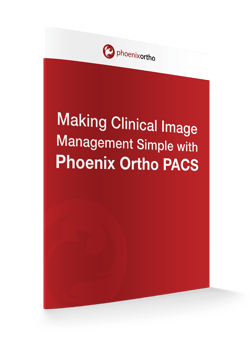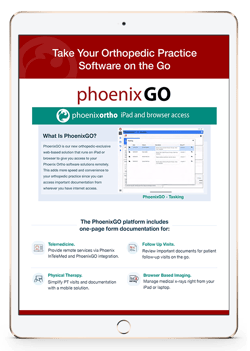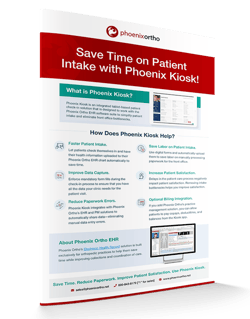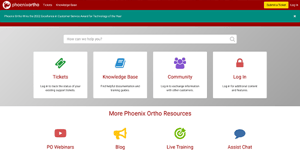Managing an orthopedic clinic can be challenging at the best of times. Many of these challenges aren’t always obvious to an aspiring orthopedic physician who’s just entering medical school or getting ready to start their own practice.
However, once the practice is opened, these challenges soon rear their heads and start consuming all too much of your time and energy. What are the biggest challenges that your orthopedic business faces? More importantly, what can you do to make orthopedic practice management easier on yourself so you can save time and effort?
What Is the Goal of Your Orthopedic Clinic?
Before we talk about practice management challenges faced by orthopedic clinics, it’s important to consider the goal of your clinic. What do you want to do with your practice? Where do you see your clinic one, three, or even five years (or more) down the line?
Even within a single practice, different physicians and business managers might have different goals for their clinic. To ensure that everyone on the proverbial boat is rowing in the same direction, it’s necessary to set goals for the practice as a whole. This way, everyone knows what they need to work towards. This can also help you prioritize your future plans based on their relevance to your goals.
Some examples of goals for an orthopedic clinic might include:
- Increasing revenue by a set percentage.
- Adding more staff to increase the practice’s work capacity.
- Improving patient flow to increase patients processed per day.
- Improving patient satisfaction ratings.
- Increasing repeat business (may often be linked to patient satisfaction goals).
- Scheduling more orthopedic surgeries.
This list is far from being comprehensive—different clinics and business managers might have their own motivations that don’t include any of the goals listed here.
Top Orthopedic Practice Management Challenges
So, what are some of the top obstacles in orthopedic practice management? Here’s a short list based on orthopedic practice private practice statistics and some feedback from orthopedic clinics:
1. Managing Physician-Patient Relationships
The relationship between a patient and an orthopedic physician is a major factor in determining how likely a patient is to return for more care in the future. However, as noted by MDedge, “The deterioration of the physician-patient relationship has been another troubling consequence of managed care that emphasizes quantity and speed.”
In turn, many patients have a damaged view of physicians in general—the growth of anti-healthcare and anti-science movements like the anti-vaccine movement demonstrate how harmed the physician-patient relationship has become in recent years.
Building a positive relationship with various patients in a community to create positive word-of-mouth and encourage repeat visits remains a top challenge (and priority) for orthopedic surgeons and other staff.
2. Orthopedic Clinic Staff Management
“Good help is hard to find” might be a clichéd statement, but it holds true for orthopedic practice staffing. From finding qualified people to take roles in an orthopedic clinic to retaining them, training them, and maximizing their productivity, there are a lot of challenges focused around managing clinic staff.
For example, say your clinic is in a relatively small town without a medical university or college nearby. Where do you go to get your staff? Odds are that you’ll have to go to a job-seeking site or service to help you find qualified talent for your orthopedic practice. However, the job-seekers on that site will be reviewing offers from numerous clinics—many of which may have more time and resources for offering incentives.
Also, once you onboard new staff, it’s important to ensure that they’re up to speed with the orthopedic practice management software solutions that your clinic uses. Otherwise, they might not be able to work at peak efficiency. Having an orthopedic EHR vendor who offers live customer training could help here.
Finally, retaining top talents can be incredibly difficult—especially when the team is already small and people are feeling the pressure that comes with being understaffed. This can increase the risk of people quitting before you’re ready to replace them. Worse, it removes high-skill people from your team and increases the risk of human error.
3. Maintaining Strong Cash Flow
Every orthopedic clinic needs money to keep the doors open—supplies need to be bought, rent needs to be covered, and staff need to be paid (or else they may leave rather quickly). However, many orthopedic businesses struggle with their cash flow.
One issue is dealing with potential claims rejections. The physician conducts a patient visit, takes appropriate notes, and submits a claim—then the claim is refused because it’s the wrong Evaluation & Management (E & M) code, there’s a missing bit of paperwork, or some other issue.
Then, the physician has to re-do the paperwork, fix whatever issue the payer organization cited, and resubmit their claim. If the resubmission isn’t accepted, then the process has to start all over again. This can create huge delays in payment which, in turn, can make it harder for the practice to cover all of its own bills.
Finding ways to improve payment collection at the point of care is a huge issue for orthopedic clinics.
4. Managing New Technology
The technology driving orthopedic care is always changing. Sometimes, clinics need to update their tech just to keep up with the competition (and the expectations of their patients). At other times, the adoption of new technology is mandated by regulatory change.
Regardless of the reason, integrating and managing new orthopedic tech into your existing workflows can be challenging at the best of times.
However, the benefits of using orthopedic practice management software, EHR platforms, and other technology can far outweigh the temporary inconvenience of shopping for different solutions, having to integrate the new system, and teaching clinic staff how to use it.
5. Data Management
Another major challenge in orthopedic practice management is handling all of the data that the clinic needs to collect to manage patient interactions. From data collection to data security, ensuring ease of access (for both staff and patients per HIPAA rules), and managing information across multiple sources (visit notes, PACS imaging files, etc.), there are numerous issues to deal with.
The problem here is that almost any data management challenge that causes a delay with one patient could cause delays with every patient.
For example, say you have to manually copy data from patient notes into your claims submission system and it takes two minutes to transcribe that manually. That doesn’t sound like a lot, right? Well, it can be. If you see 60 patients in a day, that’s two extra hours of paperwork.
This is why finding ways to overcome data management challenges is so important for modern orthopedic practices.
Overcome Ortho Practice Management Challenges with Phoenix Ortho
Need help overcoming common orthopedic practice management challenges? Reach out to Phoenix Ortho to get started. Our comprehensive suite of orthopedic software solutions helps you save time and headaches by:
- Streamlining Clinic Workflows. As the only orthopedic-exclusive EHR vendor, Phoenix Ortho has streamlined every one of our software solutions for orthopedic practices. So, you’re only presented with forms, fields, and options that are relevant to orthopedics—not for any other medical specialty. This helps save some time on every interaction with the software so you can reclaim your day.
- Improving Collections at the Point of Care. By improving patient data capture, leveraging a system that helps identify the best E & M codes to apply to every patient interaction, minimizing risk of data entry errors, and filing claims electronically, Phoenix Ortho helps orthopedic physicians improve collections at the point of care. This, in turn, helps improve the clinic’s cash flow.
- Providing Extensive Training During Customer Onboarding. It’s not enough to just have people on staff who know how to use the software—it’s important to create internal experts who can then train other new staff members as you onboard them. Phoenix Ortho’s onboarding process goes above and beyond to create “Super Users” on your team who can then train others. These users are provided all of the information needed to make the most effective use of the software—and Phoenix Ortho provides extra training as needed without charging more for the privilege so long as you’re an active Phoenix Ortho customer!
- Offering a Comprehensive Suite of Solutions. Over the years, the Phoenix Ortho team has received a lot of feedback from orthopedic physicians about the kinds of features and functions they need or would find useful. Using this feedback, we’ve created a comprehensive platform of software solutions that covers EHR, PACS, PM, telemedicine, and more! For example, the Phoenix Kiosk solution allows patients to check-in and verify their data electronically, reducing bottlenecks caused by front office paperwork tasks. This, in turn, can help improve patient satisfaction by minimizing or even eliminating a common source of frustration in the orthopedic clinic (long wait times).
If you’re ready to transform your orthopedic practice, reach out to Phoenix Ortho today!
Schedule a 1:1
Get in touch with Phoenix Ortho to learn more about how you can save time, money, and mouse clicks with an orthopedic-specific EHR.





